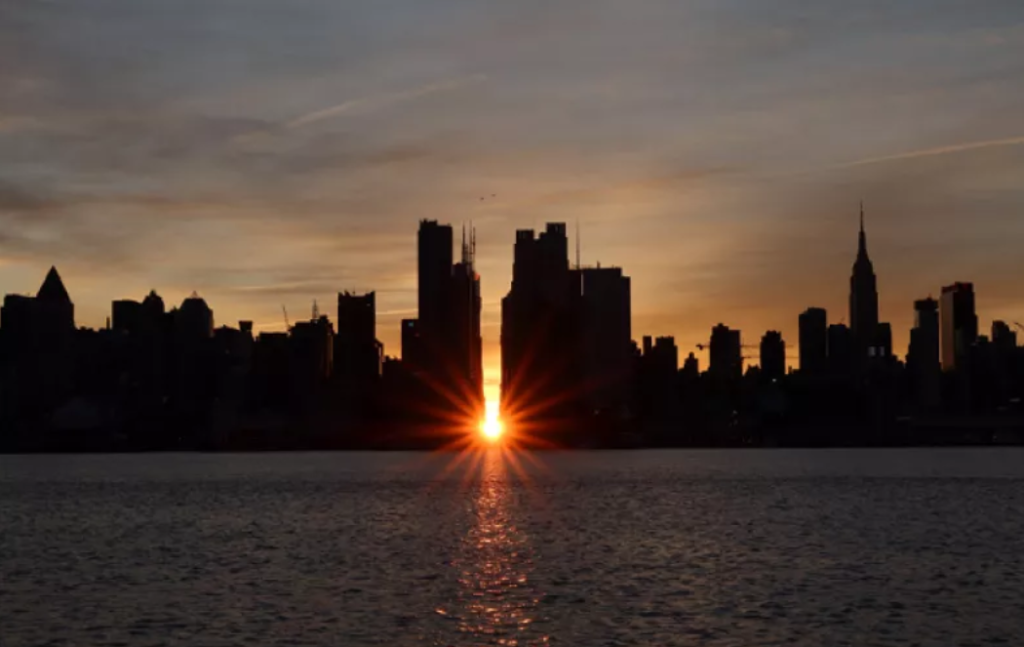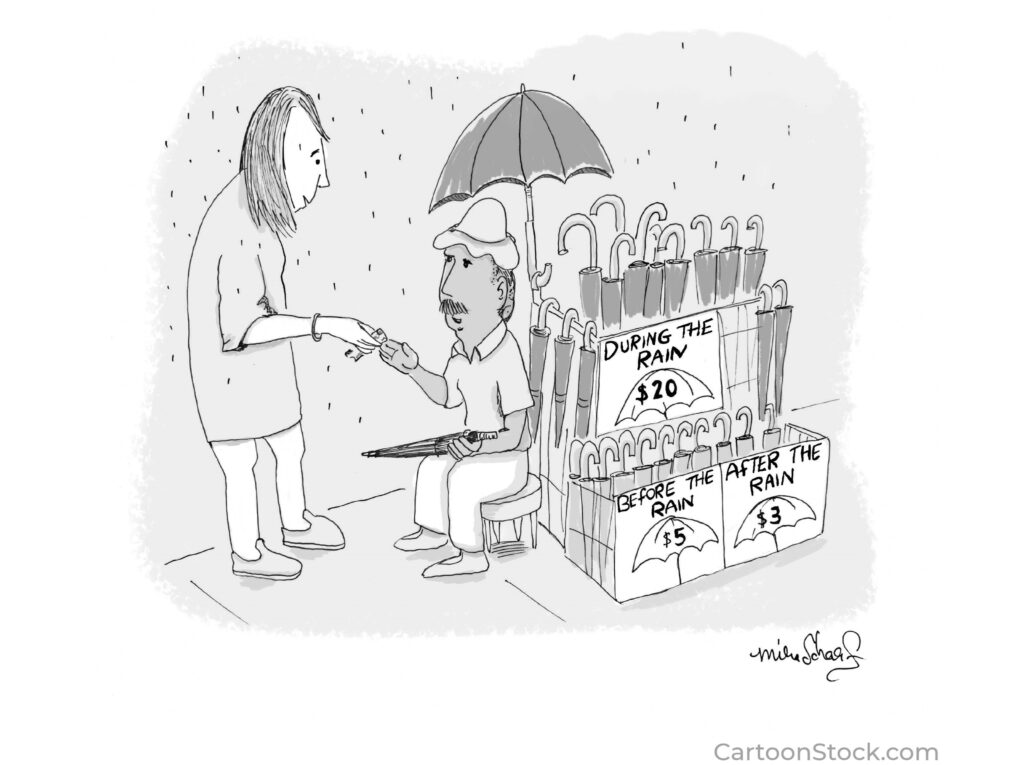Imagine a small, rural town that has a gas station, grocery store, hotel, and maybe a few restaurants – in other words, enough amenities to support the residents of the town and whatever travelers might reasonably be coming through on their way to somewhere else. Now imagine that this small, rural town is the site of an annual event attended by thousands of people – when those tourists are in town, the gas station, grocery store, hotel, and restaurants can’t hope to keep up with the demand for their services, so the town builds more of what it needs to accommodate those regular visitors.
Consequently, the town experiences a state of overwhelm during the tourist event and then feels like a ghost town, with hotels, restaurants, etc. sitting largely empty for the rest of the year. The businesses can adjust by hiring temporary staff and training them before the tourist rush is expected, ordering more food and supplies ahead of time, and then ramping down their operations during the off season. But these businesses cost money to build, and it still costs a lot of money to fully maintain, insure, and manage them, even when they’re not being used at full capacity.
Feast vs. Famine
Now, the draw of this hypothetical town is so compelling that we can be reasonably certain the number of tourists will only continue to increase over time, but they’ll still generally be coming during that same busy time. Maybe the town will be able to host them, and maybe they won’t, but if existing businesses are having trouble being able to cover their startup and maintenance costs with the short period of intense business they get every year, it’s less likely that more people will be interested in starting their own businesses only to see them used so inconsistently. If there is reluctance (or even inability) to expand the tourism infrastructure in this town, the town may need to explore other options, like managing the flow of tourists or just letting that demand go unaddressed (which is not a good option from a business perspective.)

Image credit: [1]
It’s a crude analogy, comparing humans at an event to electrons moving through wires in the electrical grid, but there are similarities – especially when it comes to other humans making business decisions about how to prepare for capacity constraints in feast-or-famine scenarios. A very good question raised by one of my friends after reading the last post in this series [2] was what other factors are playing a role in this situation with the global transformer shortage: there is massive global demand and a three-year lead time for essential equipment but a lack of movement on expanding manufacturing capabilities to ease imbalance of supply and demand.
I don’t have an answer to that question, but it does appear (thanks to another friend who has more insight into the industry than I do) that part of the holdup is the massive upfront cost and decades-long wait to break even on the investment of creating new manufacturing facilities for transformers. (Just another reason why I love having readers comment on this blog – we all have something we can learn from each other!)
While transformers don’t themselves represent grid capacity (like a hotel or restaurant in our tourist town example), they are a necessary component of a functional and expanding grid. Without them, we will be limited in how quickly we can connect new sources of energy to the grid in order to meet growing demand and in how quickly we can continue to support the amount of power that buildings are taking from the grid as they become more and more reliant on electricity over gas.

Image credit: [3]
Supply vs. Demand
And while it’s not a perfect analogy, given those delivery limitations on the supply side, it makes sense to look at our use on the demand side in the context of that tourist town. We have not yet examined the details of this event: is it one large event or a handful of smaller events that all happen at the same time? does it have to take place that specific weekend, or is that just when it has always happened?
Maybe it’s a celestial event, which happens when it happens every year, with no chance of rescheduling – like a meteor shower, a solstice at Stonehenge, or (something I recently discovered that is drawing increasingly larger crowds every year) “Manhattanhenge,” as the sun aligns with the city streets and can be viewed rising from the West Side or setting from the East Side. [4] (I also discovered when grabbing the reference link that it is next happening on my 40th birthday, and I would love to drop everything and be one of those tourists. But I digress…)
Maybe it’s a movable event that is scheduled at a convenient time but not “locked in” based on the movement of the spheres. And maybe there are several events happening at once, which developed organically based on when tourists were already going to be in the town. In this more fragmented and potentially flexible situation, the town might prefer to spread out the tourist volume a bit to ease the frenzy of its heaviest weeks and get more business in quieter times. We already see aspects of this scenario in practice. For example, my family used to vacation at the shore the week after Labor Day: the weather was still pleasant, and many of the restaurants were still open, but it was much less crowded, and the hotel rates were generally cheaper.
Carrot vs. Stick
Real-time variable pricing based on demand is something we frequently see with ridesharing services, and while it isn’t always a popular situation, surge pricing does encourage riders to think ahead and adjust their plans if possible. [5] We see dynamic pricing when purchasing plane tickets and accept it as part of doing business with airlines, whether we like it or not. But fast food chain Wendy’s caught flack earlier this year when they attempted to roll out a test of dynamic pricing. According to the company, they wanted to explore how offering discounts during slower times of day would impact the flow of customers, but they were widely accused of doing the opposite: raising prices during periods of high demand. [6]

Image credit: [7]
While it seems relative, there is absolutely a difference between lowering prices during times of low demand and raising prices during times of high demand. Businesses certainly need to be able to cover their costs when market factors raise the cost of doing business, but extreme spikes in prices when consumers have few or no alternatives is considered price gouging. And price gouging quickly becomes an equity issue when we’re talking about human necessities like food and shelter, which is why you’ll sometimes see price freezes enacted in the wake of natural disasters. [8]
And, once again, that brings us back to the role of business and business decisions in influencing how and when we use a certain product – in this case, electricity. Next week we will continue by examining ways consumers are being encouraged to think about their use and adjust their behavior to help smooth demand.
~
Until then, what questions do you have? What insights can you share? What am I missing? I’d love to hear your thoughts below.
Thanks for reading!
Keep Reading About The Grid –>
[1] https://www.cooperslake.com/prereg/account/index.php
[2] https://radicalmoderate.online/more-than-meets-the-eye/
[4] https://www.amnh.org/research/hayden-planetarium/manhattanhenge
[5] https://www.uber.com/us/en/drive/driver-app/how-surge-works/
[6] https://www.cnn.com/2024/02/28/business/wendys-dynamic-pricing-surge-explained/index.html
[7] https://www.cartoonstock.com/directory/e/elasticity_of_demand.asp
1 Comment
Rebecca J Steele · May 20, 2024 at 6:24 pm
Interesting food for our brain. At some point all grids will be over loaded. No power, no where. Keep matches, survival kit handy.